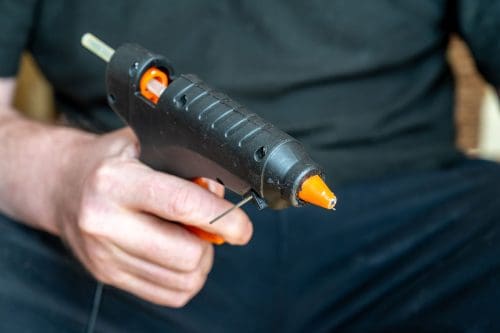If you work with beads in your craft, you know that beads are made from many different materials. One popular type of bead material is glass. If you've never worked with glass beads, you may wonder whether it fades over time or not. We've done the research to bring you the answer.
Glass beads, like most other materials, will fade over time if they have been dyed or painted. There are many factors that impact how much and how quickly beads will fade, including:
- Exposure to sunlight
- Finish
- Handling
- Exposure to water
Learning more about each of these factors will help you determine if dyed glass beads are the right choice for your projects. Read on for more information!
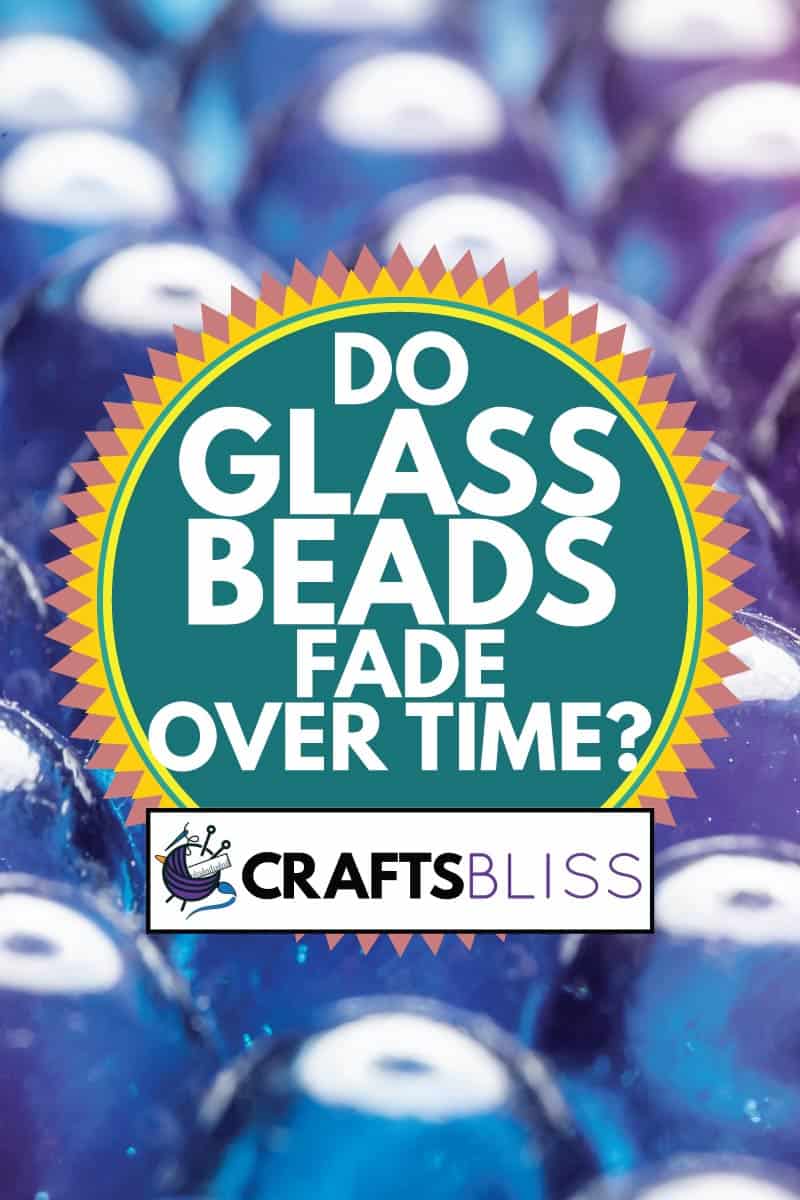
Factors That Impact Fading
Let's go over the factors that impact the fading color of glass beads:
Sunlight
Sunlight is the biggest culprit of faded beads. Your beads will not instantly fade when they are exposed to the sun. Instead, the process will occur over a period of time. How long it takes for you to notice fading from the sun depends on how long your beads are exposed to sunlight. To reduce damage to your beads from the sun, make sure to store them out of direct sunlight.
When choosing whether or not to use dyed glass beads for your project, consider how long your finished product will be exposed to sunlight. You can use dyed glass beads in jewelry if the product is unlikely to be spending all day in the sun. For example, a necklace or bracelet can contain dyed glass beads but it might be a good idea to warn the wearer of potential fading. An anklet or toe ring, on the other hand, should not be made with dyed glass beads because they are summer accessories meant to be shown off.
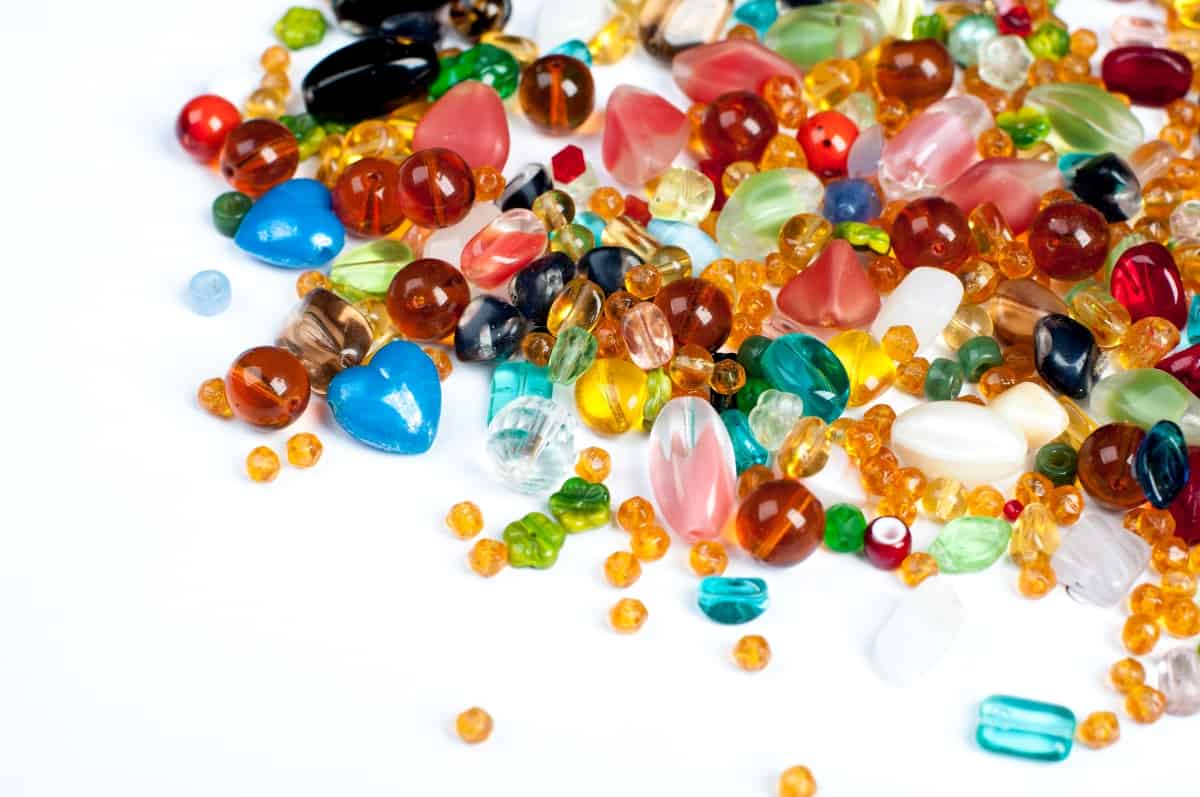
Finish
The finish of a bead also has an impact on whether or not the bead is susceptible to fading. Some materials, such as translucent or opaque beads, are made with colored material. These are unlikely to fade because the glass itself is what contains the color. Other finishes, such as dyed or galvanized, add color to a bead through the coating. These are likely to fade as the coating wears off.
Handling
You know that if you handle any object frequently it is more at risk for getting damaged than if the object isn't touched at all. The same is true for handling beads but for a different reason. When you handle beads that are coated or dyed, the oils in your hands can cause that coating or dye to wear off.
Sweat is another hazard to the coating and dyes that are used in beads. If you wear finished beads while you participate in activities that cause you to sweat, the coating or dye may wear off more quickly.
Exposure to Water
If your beads are exposed to water, especially for a prolonged amount of time, they are at risk of fading. However, when it comes to fading, not all water is created equally. Hot water, chlorinated water, and saltwater are likely to cause beads to fade faster than cold water that doesn't have any chemicals added to it.
Dyes and coatings are also not created equally when they are exposed to water. If you are dying your beads at home and know that your projects may be exposed to water, stay away from food dye and choose glass paint instead.
It is important to consider what your products may be exposed to when choosing which beads to use. There are many glass beads available that have not been dyed. Look for opaque or translucent glass beads with no added coatings when creating projects that will frequently be exposed to these factors.
Translucent Glass Beads
Click here to see this product on Amazon.
Opaque Glass Beads
Click here to see this product on Amazon.
Can You Dye Glass Beads?
The short answer is yes, you can dye glass. However, the easiest way to color beads is to actually paint them instead of dying them. This is because most dyes, even general-purpose ones, are not able to dye glass. You will want to be sure that whatever you use for dying beads is made for glass, even if not exclusively. If the colorant you use is not compatible with glass, the color will not adhere to your beads and if it does, it will likely peel off sooner rather than later.
How Do You Dye Glass Beads?
Food dye and glass paint are the most common ways to dye glass beads. We'll break down how to dye glass with both techniques.
Food Dye
Food dye is the cheapest way to dye glass. If you are using your beads in jewelry, this might not be the best option for you. Food dye should be used for beads that will not be exposed to moisture, such as using them for crafts or wall hangings that will stay indoors and not be handled frequently. Here are the steps for dying glass with food dye:
- Clean and dry your beads thoroughly.
- For each color you want to use, combine tap water and food dye in separate small containers. The suggested formula is one teaspoon of water for 4-5 drops of dye.
- Add Mod Podge to each container and mix.
- Use a paintbrush to paint each bead the color of your choice.
Food Dye
Click here to see this product on Amazon.
Glass Paint
Glass paint is the best option for dying beads that will be used in jewelry, clothing, or accessories. The process is very similar to the food dye method, except for the way the colorant is prepared. Follow these steps to dye your beads with glass paint:
- Clean and dry your beads thoroughly.
- Mix paint lightener and paint together in a container, one container for each color. The suggested formula is 1/4 teaspoon of lightener for each teaspoon of paint.
- Use a paintbrush to paint each bead the color of your choice.
Paint lightener is used to make your paint thin enough to apply to glass. You can use nail polish remover as a thinner if you have nothing else on hand but it is preferable to purchase a lightener that is made for this purpose:
Click here to see this product on Amazon.
Which Seed Beads Hold Their Color Better?
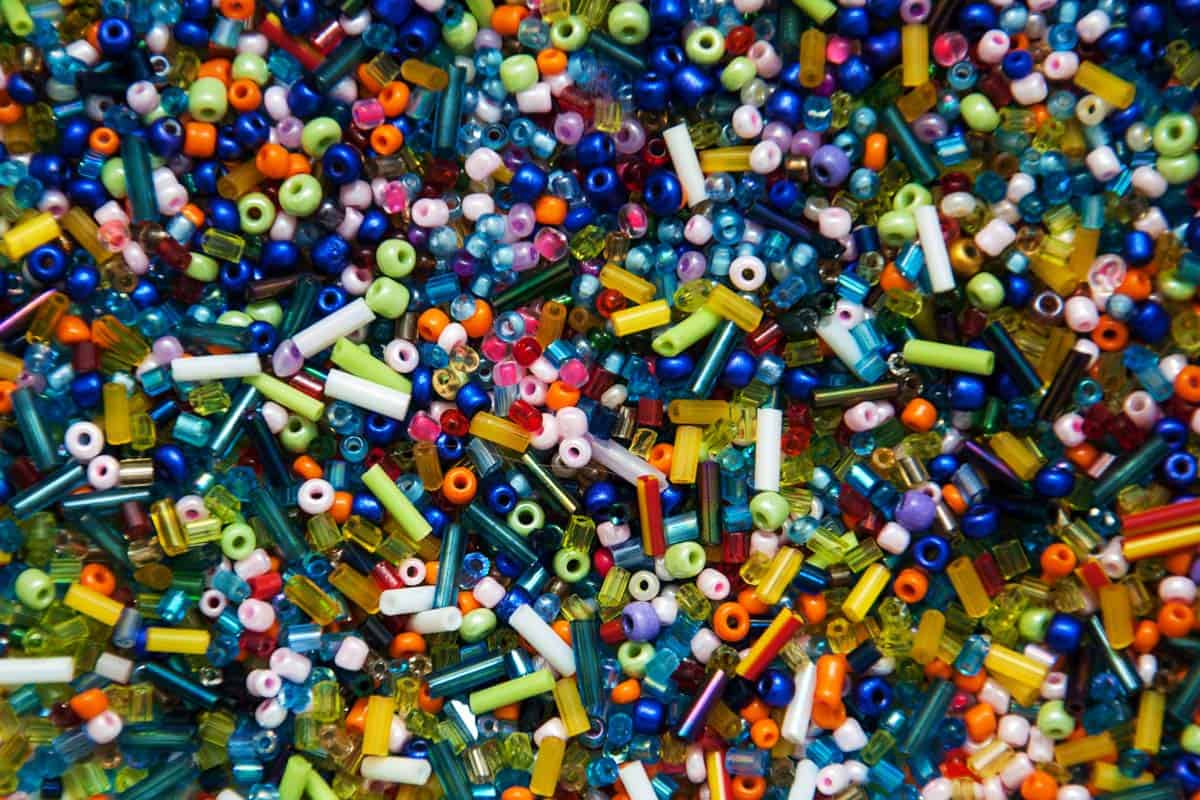
Transparent or opaque seed beads are the most durable and hold their color better than other seed bead types. If you want a bead that is tinted and see-through, transparent is the type you are looking for. If you want the color to be solid, go with the opaque beads.
Do Glass Beads Break?
Glass is probably the most fragile bead type. They are very susceptible to breakage. Aside from breaking completely, they are also likely to crack or get scratched when not cared for properly. You will want to take care when storing your beads and include instructions for care if you are selling products made with glass beads.
How Can You Tell If A Bead Is Glass?
Glass beads have a number of characteristics to help identify them as opposed to other bead materials. Here are some characteristics you can look for:
- Glass beads are cooler to the touch than other materials.
- The beads are more fragile and will break more easily if struck, but will not melt like plastic.
- Glass beads are heavier than beads of other materials.
When you purchase beads, whether online or in a retail store, the packaging will likely tell you what material was used to make the beads. It will also tell you if there was any treatment, coating, or dye used to make the beads.
In Closing
If you are using glass beads in your products, you will want to pay close attention to if they are dyed or coated. If you find that they are, those beads are best used for projects where the risk of fading is minimal, such as in home decor, rather than in jewelry or accessories that will be worn.
If you are purchasing glass beads online, pay close attention to the product descriptions, and don't be afraid to ask questions if the information is not explicitly stated. Glass is a stunning material for any of your beaded projects. Choosing the type that best fits your needs will ensure that your pieces stay gorgeous for as long as they are used!

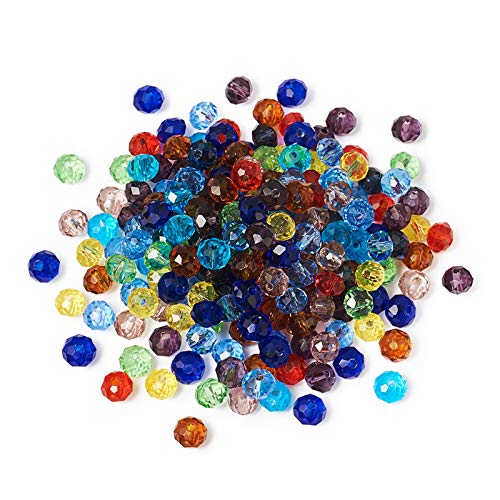



![Read more about the article Can You Use Hot Glue On Paper [And How To]](https://craftsbliss.com/wp-content/uploads/2023/01/Woman-using-hot-glue-gun-to-make-craft-at-wooden-table-500x333.jpg)


![Read more about the article Can Leather Be Dyed Any Color? [Popular shades suggested]](https://craftsbliss.com/wp-content/uploads/2020/10/Pieces-of-colorful-raw-leather-hanging-on-wooden-shelf-500x333.jpg)
